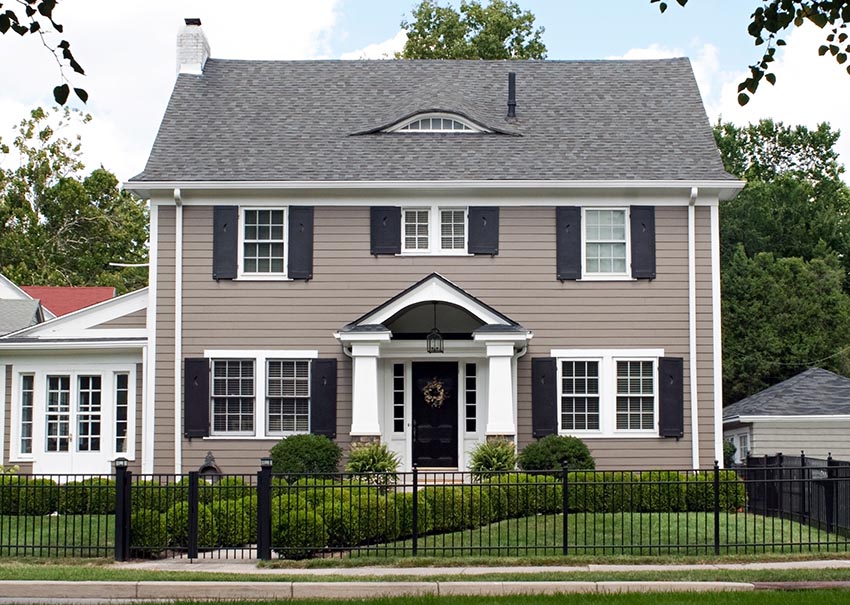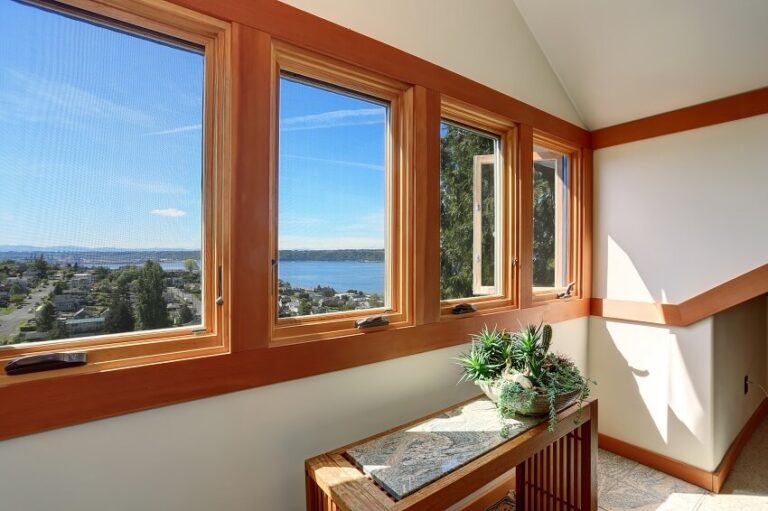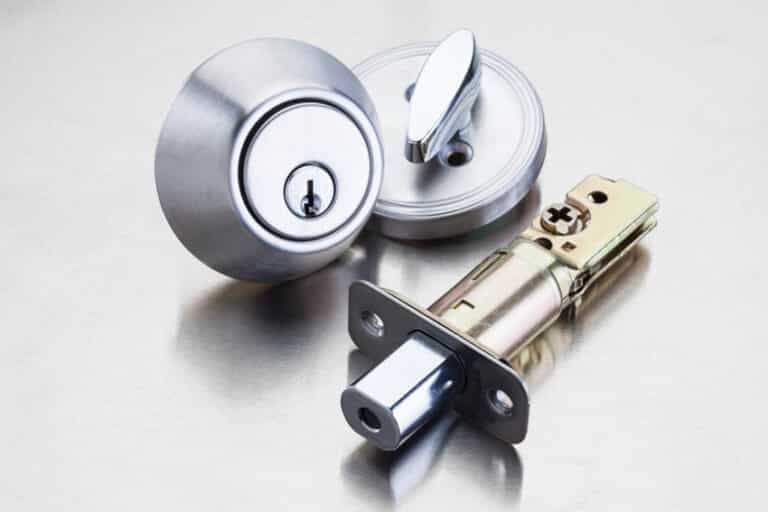How to Soundproof a Door (Guide to Best DIY Solutions)
In this guide we share how to soundproof a door including the best products and DIY solutions for the bedroom and home office.
 Unless you live in an isolated area, chances are you’ve been bothered by noise at some point in your current home.
Unless you live in an isolated area, chances are you’ve been bothered by noise at some point in your current home.
Maybe the noise comes from outside your home — foot and road traffic, or noisy neighbors, or maybe it’s coming from inside the house, created by your family, your roommates, or even your pets.
Whether you need to soundproof your home office door so you can work in peace, or your bedroom door so you can catch some sleep, read on to discover the best interior door soundproofing solutions. [toc]
How to Soundproof an Interior Door

If the room has an echo, then sound is bouncing around the surfaces of the room, and you need a soundproofing material with sound absorption properties.
If the issue is that sound from within the room travels through the door to other spaces, you will need to choose a solution that includes sound insulation.
Getting these two terms straight in your mind before making any decisions will ensure you get the right product, saving you time, effort, and money.
You will need to understand the anatomy of a door. Most types of interior doors are hollow-core, which means they are essentially an empty box.
Tap on the door with your knuckles and you’ll be able to hear if it’s hollow or solid. A hollow-core door will allow much more sound to escape the room than a solid door.
Hollow-core doors are usually chosen for interior doors, such as an office or bedroom because they are much less expensive. Solid doors are more likely to be used for exterior entrances and exits.
Some terminology to familiarize yourself with: a door ‘frame’ refers to all the pieces of wood (or metal) that are permanently attached to the wall. Along the top is the ‘head jamb’, and on the sides are the ‘side jambs’.
The door is attached to one of the side jambs using hinges. The other side jamb contains the closing or locking mechanism.
Yet another consideration is the frequency of the sound you are trying to block. Low-frequency sounds (trucks on the highway, rumbling machinery like a generator) are much more difficult to block than high-frequency sounds (human voices, birdsong).
If complete soundproofing is your goal, you may need to combine several options from this article for the best result.
It can be difficult to accurately compare different sound-blocking, sound-isolating, and sound-absorption options. Products don’t have to undergo any clinical or field testing in order to advertise themselves as ‘sound-blocking’, so this term is essentially meaningless.
However, there is a rating scale that can be useful. The STC (or Sound Transmission Class) rating scale is most commonly applied to windows and doors, but is also applied to some acoustical materials.
An STC rating is calculated by exposing a product to 18 different frequencies, and measuring the amount of sound (in decibels) that is allowed through at each frequency.
The measurements are then added together and divided by 18 to obtain the average. The average amount of sound allowed through the product corresponds to a rating on the STC rating scale.
For reference, a regular window is likely to have an STC rating between 26 and 32. When a soundproof window is added, the STC rating might rise to as much as 48.
Installing a specialty soundproof door is the easiest way to minimize noise in an interior room. However, soundproof doors are quite expensive and require professional installation.
Unless you’re building a recording studio, there are many other soundproofing, sound blocking, and sound dampening options to explore.
Most consumers will be able to find an inexpensive and/or do-it-yourself option that can eliminate a surprising amount of noise pollution.
Soundproof a Door with Weatherstripping
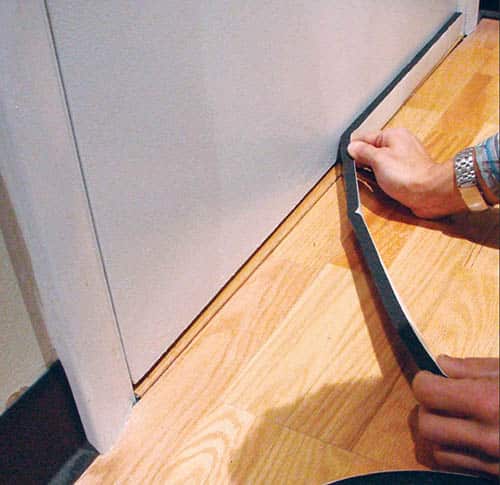
Look for something with an adhesive backing that can stick directly to your door or doorframe. The downside to this solution is that it tends to peel off with repeated use.
Making sure the surface is clean and dry before sticking the weatherstripping tape can help the installation last longer. You may also need to experiment with different foam density and thickness to find one that adequately blocks sound, but also allows the door to close easily.
If you choose this route, it’s best to buy more weatherstripping than you need, saving yourself a trip to the store when it inevitably needs to be replaced.
Install a Door Gasket

Door gaskets are installed along or in place of the door jambs. This allows the door to rest on the gasket when fully closed, and drastically reduces the movement of noise, light, sound, and air through the gaps around the door.
A door gasket will not only significantly reduce sound leakage, it may have other benefits, such as improved temperature insulation and better fire protection properties.
Soundproof a Door with a Door Sweep
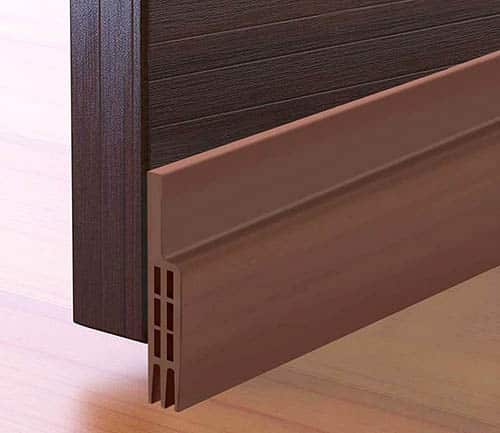
While weatherstripping is a great solution for the sides and top of your door, the bottom of the door requires a specialty product called a ‘door sweep’.
A door sweep is installed using clamps or screws along the bottom of your door. It can be made from a rubber fin, similar to a windshield wiper blade, or from a wide, thin brush with short, stiff bristles.
A door sweep ‘sweeps’ across the floor when the door is open, forming a barrier along the bottom of the door when the door is closed.
Door sweeps come in single and double varieties. A double door sweep is recommended for soundproofing purposes, as it has two layers of protection against noise leakage.

Install Soundproofing Rubber

Expect to pay at least $2 per square foot, with prices increasing for thicker/more absorbent materials. Make sure when cutting and installing that the rubber doesn’t interfere with the door’s closure mechanisms or hinges.
Soundproofing rubber will help stop sound from traveling through the door, but it won’t do anything about the gaps between the door and the wall, so it is best paired with a door sweep and/or gasket.
Not the prettiest or least expensive option, soundproofing rubber looks rather utilitarian, but it does block a significant amount of sound.
Install Acoustic Panels

If you are a voice-over artist or podcast host, this might be very important to you. If you simply want to be able to hear yourself think, this is less important.
Sound insulating or soundproofing acoustic panels tend to be more expensive than simple sound absorption panels, but are definitely worth the higher price tag if you want to keep sound from entering or exiting a room.
The best panels are fabric-wrapped fiberglass, but cheaper foam options are also available. Check the manufacturer’s specifications for instructions on how to install these products on your door.
Add a Wood Panel to the Door
If you have a hollow-core door in the room that you’d like to soundproof, don’t worry. You can imitate a solid door simply by attaching a wood panel to the existing door.
A sheet of plywood, carefully cut to size and screwed onto the door, will offer a surprising amount of sound protection.
This method is easy to do yourself and very cost-effective. If you choose very thick plywood, you may need to replace or reinforce the door’s hinges, to make sure they can support the added weight of the door panel.
Use a Soundproof Blanket
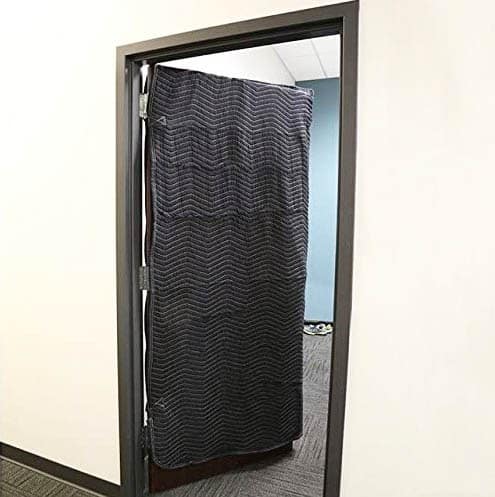
Any blanket or thick fabric will absorb some noise and reduce the echo while muffling the sound that escapes from the door. A moving blanket is a slightly more costly and slightly more effective sound absorption solution.
For true sound isolation, however, you’ll need a specially designed and STC-rated blanket. The heavier the blanket, the more sound it will block from leaving the room, and some of the highest-rated blankets are almost too heavy to lift by yourself.
To install a soundproof blanket, use a wall-anchor to install heavy-duty hooks into your wall (or better yet, find a stud and drill directly into that.) Most soundproof blankets come with eyelets along the side.
For maximum sound insulation, line both the blanket and the wall around the door with strips of velcro. Just don’t forget to warn your roommates or family when you’ve sealed the door from the inside.
Soundproof Door Covers
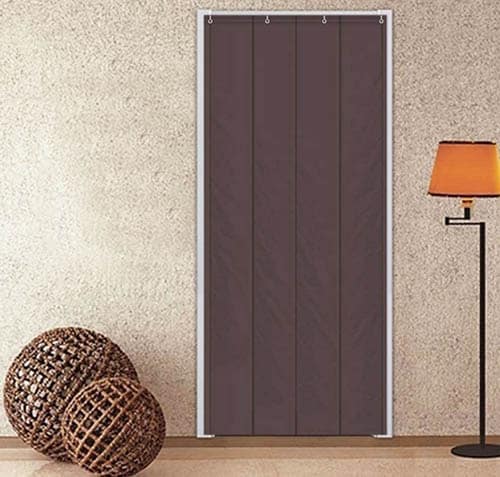
A door cover, on the other hand, is firmly attached above the door. To cover the door, it is rolled down, and to uncover the door it must be rolled up out of the way and secured with ties, straps, or velcro.
Door covers are a great choice if you will not need to enter and exit the room frequently, but may become frustrating if you’re in and out of the room a lot throughout the day.
Soundproof Door Curtain
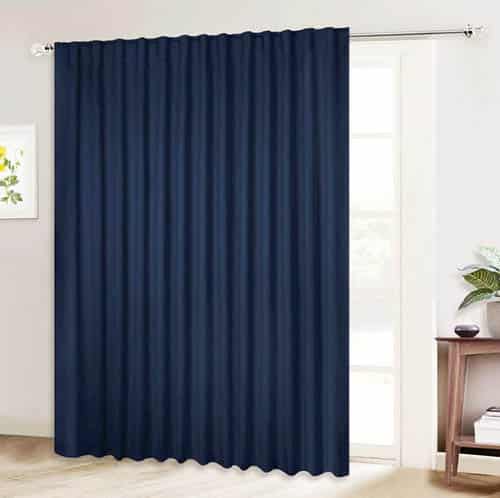
Purchase a pre-fabricated acoustical curtain, or make your own from soundproof blankets. Because these fabrics are very heavy, make sure the curtain rod is securely attached and able to bear the weight.
A soundproof door curtain may be a great choice for French doors, sliding doors or glass window doors to add additional privacy when used in a home office or bedroom.
Soundproof a Front Door
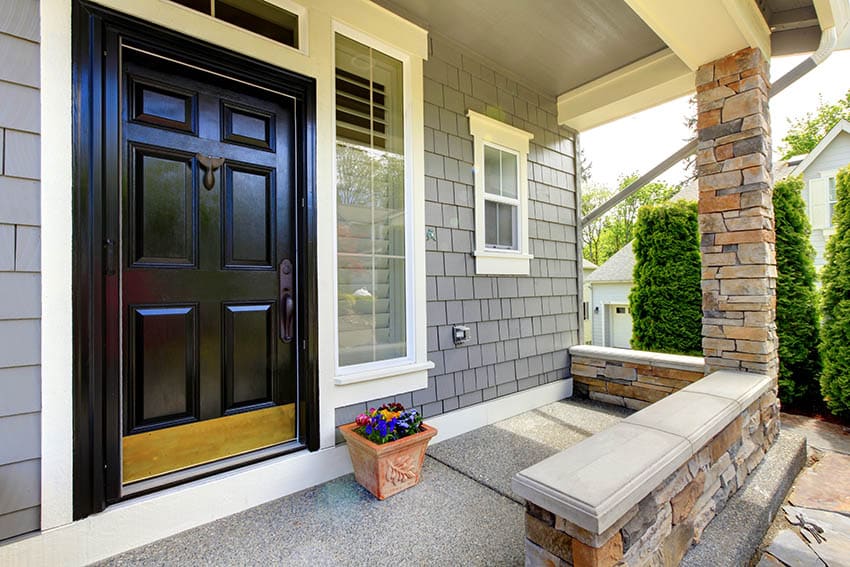
This is because exterior doors have to protect against temperature variation, and are generally designed to keep dust or dirt from entering the house.
While these features may not be intended to provide sound protection, they certainly don’t hurt!
Soundproof Door Kits
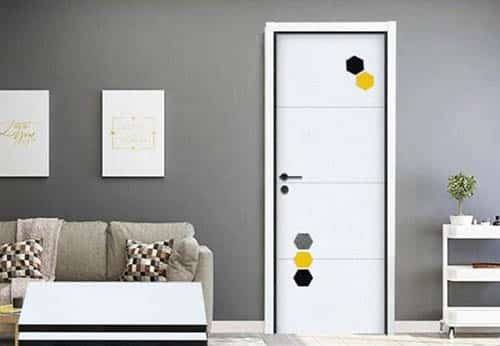
Soundproof door kits most commonly include both door sweeps and weatherstripping. You may also find packages or bundles that include door curtains and/or door gaskets.
If the specifications on the kit match the specifications of your door, you could solve your sound problems with a single click.
Make sure to compare the price of the kit to the price of purchasing each item individually — there may be a markup for the convenience of purchasing multiple products together.
Soundproof Paint
There is one option that requires no hardware or installation at all, just a dropcloth and a paintbrush: sound-reducing paint.
While it won’t turn your spare bedroom into a whisper-quiet isolation booth, applying several coats of this thick substance to your walls and doors can help absorb some mid-frequency sounds (like human voices).
For more related ideas visit our article on how to soundproof a home office.

